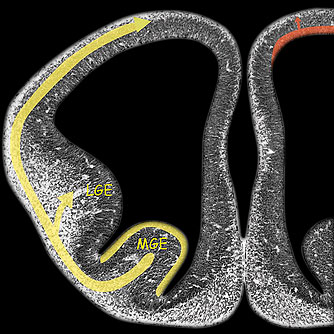The medial ganglionic eminence (MGE) cell is a type of human nerve-cell progenitor that plays a key role in neurodegenerative disorders ranging from Alzheimer’s to Parkinson’s diseases, epilepsy, and spinal cord diseases. Arnold R. Kriegstein, from the University of California/ San Francisco (UCSF; California, USA), and colleagues have successfully grown MGEs in the laboratory and transplanted them to further develop in the brains of mice. The study authors submit that: “MGE-derived cortical interneuron deficiencies are implicated in a broad range of neurodevelopmental and degenerative disorders, highlighting the importance of these results for modeling human neural development and disease.”
Lab-Grown Brain Cells Hold Promise to Treat Neurological Conditions
Cory R. Nicholas, Jiadong Chen, Yunshuo Tang, Derek G. Southwell, Nadine Chalmers, Arnold R. Kriegstein, et al. “Functional Maturation of hPSC-Derived Forebrain Interneurons Requires an Extended Timeline and Mimics Human Neural Development.” Cell Stem Cell, Volume 12, Issue 5, 2 May 2013, Pages 573-586.
RELATED ARTICLES




